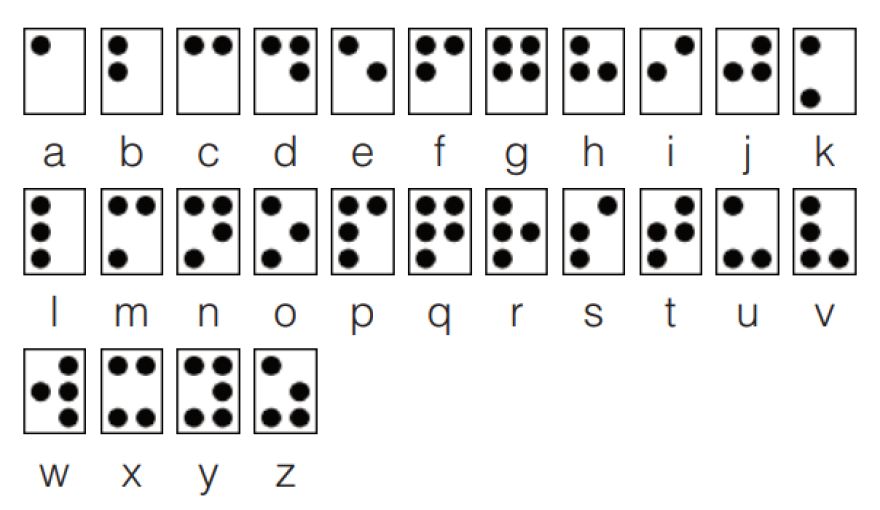Joaquin Rodrigo was one composer who was blind, but wrote his music in braille, which was later transcribed into printed notation. But what exactly is braille, and specifically braille music?
Braille is a method of reading and writing for people who are blind in which raised dots represent letters of the alphabet. In Braille, each letter is represented by a particular arrangements of dots in a six-dot cell.

Braille was developed in the early 1800s by Frenchman Louis Braille who lost his sight in a childhood accident. Louis modified the "night writing" code that was developed by Charles Barbier, who served in Napoleon Bonaparte's French army, as a way to communicate combat messages safely during the night, without light or sound.
Literary braille used for reading and writing language has also been modified to make music accessible to people who are blind. Using the solfege system (do-re-mi-fa etc.), Braille started with the letter "D" to represent do, and continued on through the alphabet with the symbol for the letter representing a note in the scale as follows:
d=do, e=re, f=mi, g=fa, a=sol, b=la, c=ti. Read more about the basics of musical braille.

Other symbols are used to designate the types of notes (quarter, eighth, half, whole), rests and other musical symbols. Braille music is written in a linear fashion and does not use a five-line staff or measure lines, as the "notes" are all written in sequence to be easily read by the braille reader.

Here's an example of how notation is transcribed into braille. The left page shows the braille notation and the right page shows the same piece in standard notation.



